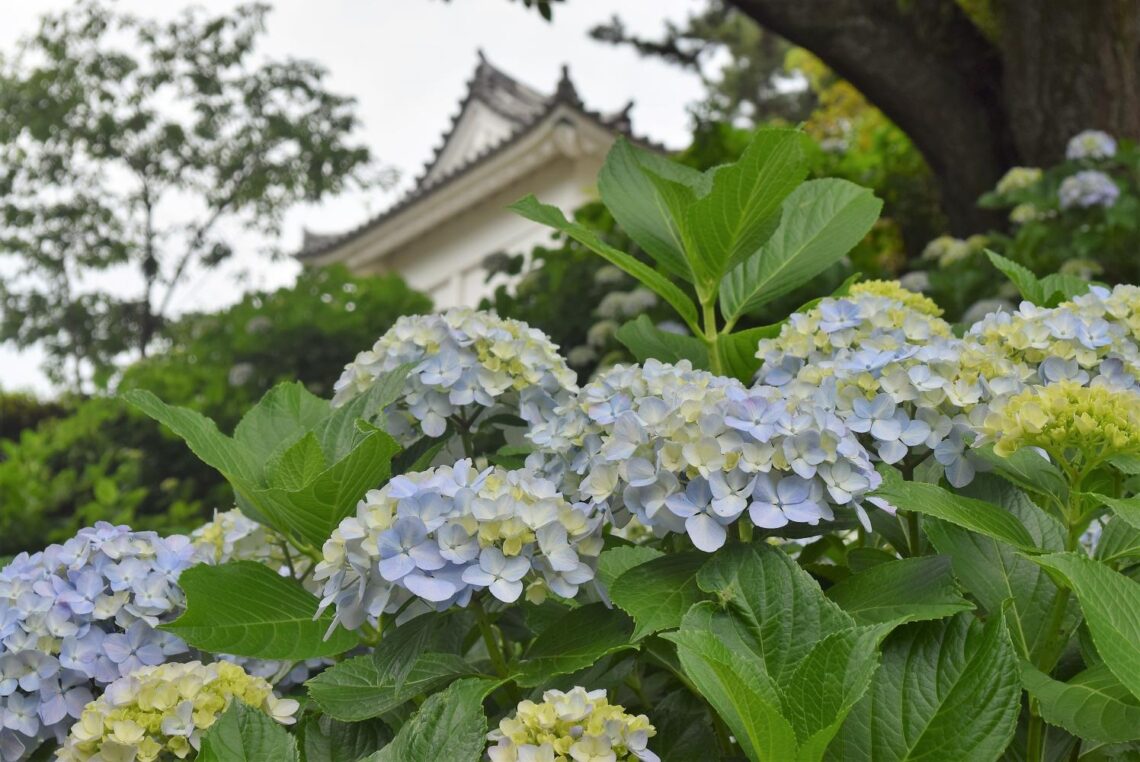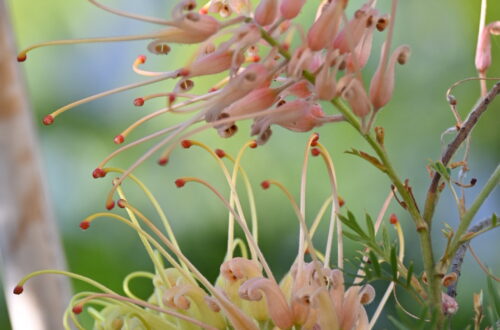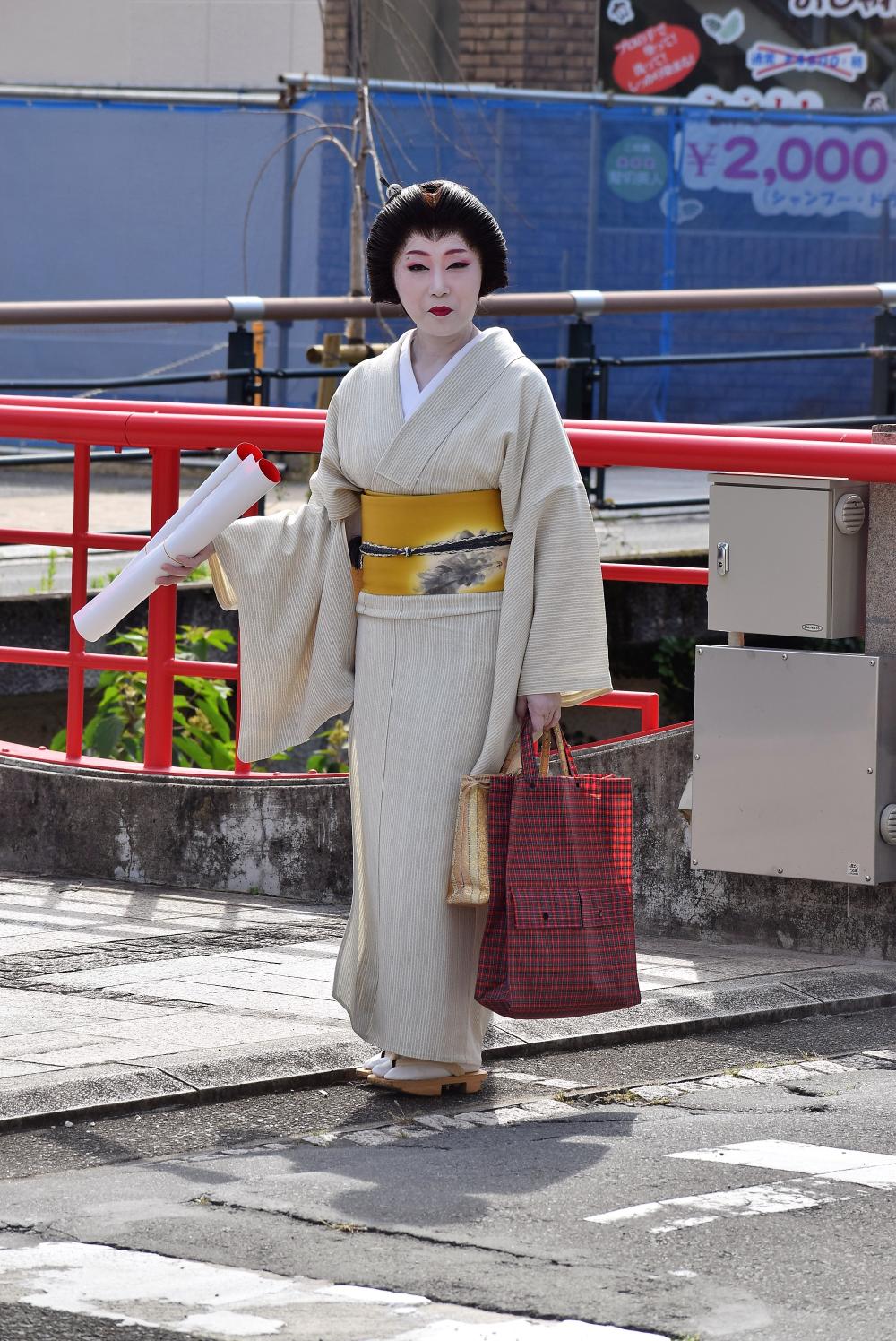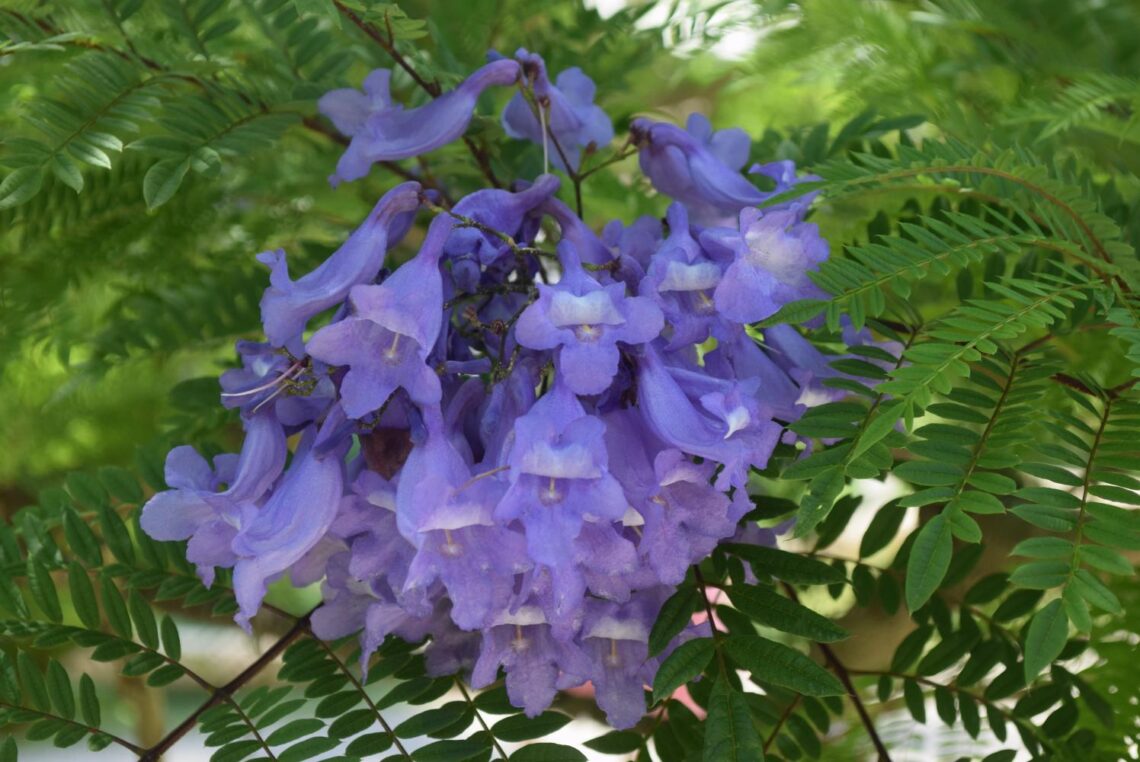From Atami, we backtracked only the old Tokaido route to the castle town of Odawara. We were delighted to be presented by a garden full of flowers again, this time the hydrangea and shobu, both plants that bloom around now when the rainy season hits. Mrs. Kanageroo had never climbed the keep of the castle, so we headed upstairs through the concrete recreation of the once crucial fortress in feudal times and enjoyed the glorious view it gave of the once strategic city. Greater things awaited, though, so we didn’t linger for long, but were there for just enough time…
-
-
Our delightful time in the seaside city of Atami drew to a close as we overcome a huge buffet breakfast and watched a black kite circle the skies for prey in the early hours of the morning. The bird of prey was majestic and graceful as it glided through the air. I could have watched it for hours (and actually did just that, to the chagrin of Mrs. Kangaeroo as I was supposed to have been packing!) Related posts: Jacaranda Journey Provides Purple Haze Gay Time With a Geisha A Second Bite of Biwaichi A Pheasant Start to the Morning…
-
Gay, in this context, meaning enjoying ourselves, and it was for a fleeting instant that the joy came through a geisha, but the headline was hard to resist. Still in Atami, we moved on from the Jacaranda Festival to the very surprising Kiunkaku. Japan’s Meiji era is an amazing time in history as Japan moved from a feudal country to industrialized nation and world powerhouse in decades, becoming the only non-Western country to do so. It was an absolutely scintillating transformation and the Meiji-Taisho eras from which Kinukaku, a former ryokan inn, draws its influence. Many swoon at the influence…
-
Mrs. Kangaeroo and I woke up early, let the dinosaur roam free for a while to stretch her wings, then headed off to Atami for one of Japan’s few jacaranda festivals. We’ve got a jacaranda in our garden and it has proven to be pretty fickle, so I was very interested to see how more experienced, more skillful gardeners such as those good enough to hold a festival centered on the trees would handle the South American natives. And it was interesting, indeed, because the 100-odd trees the city has grown in the 34 years since being presented with a…









